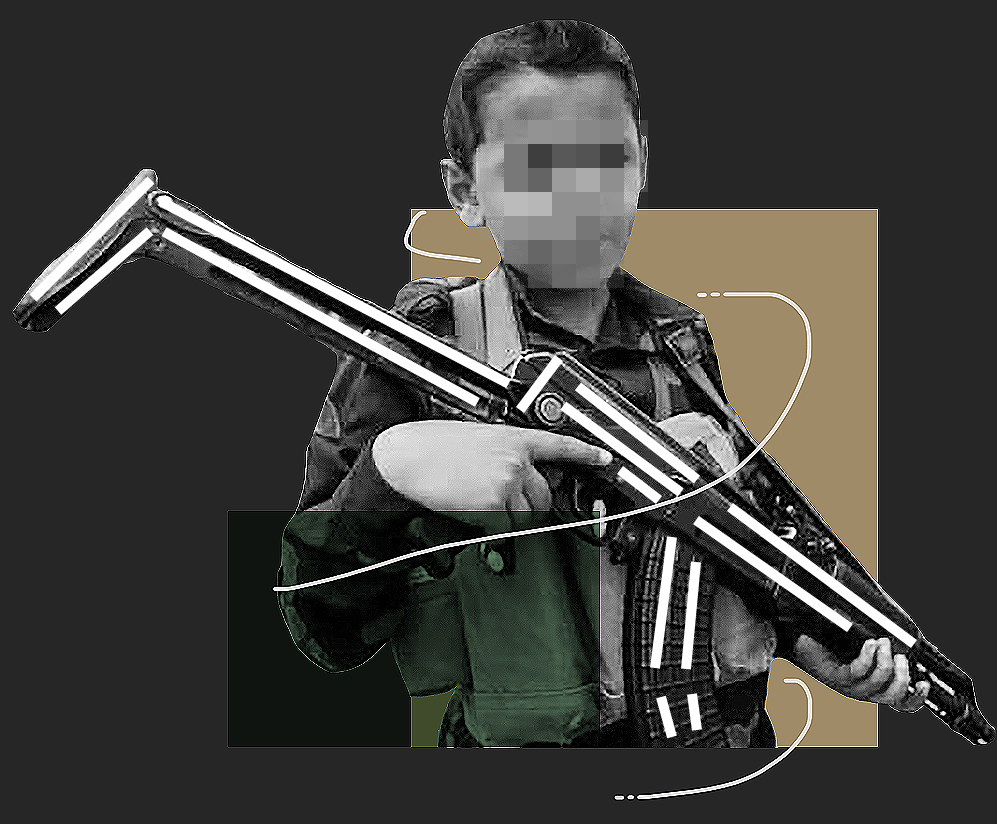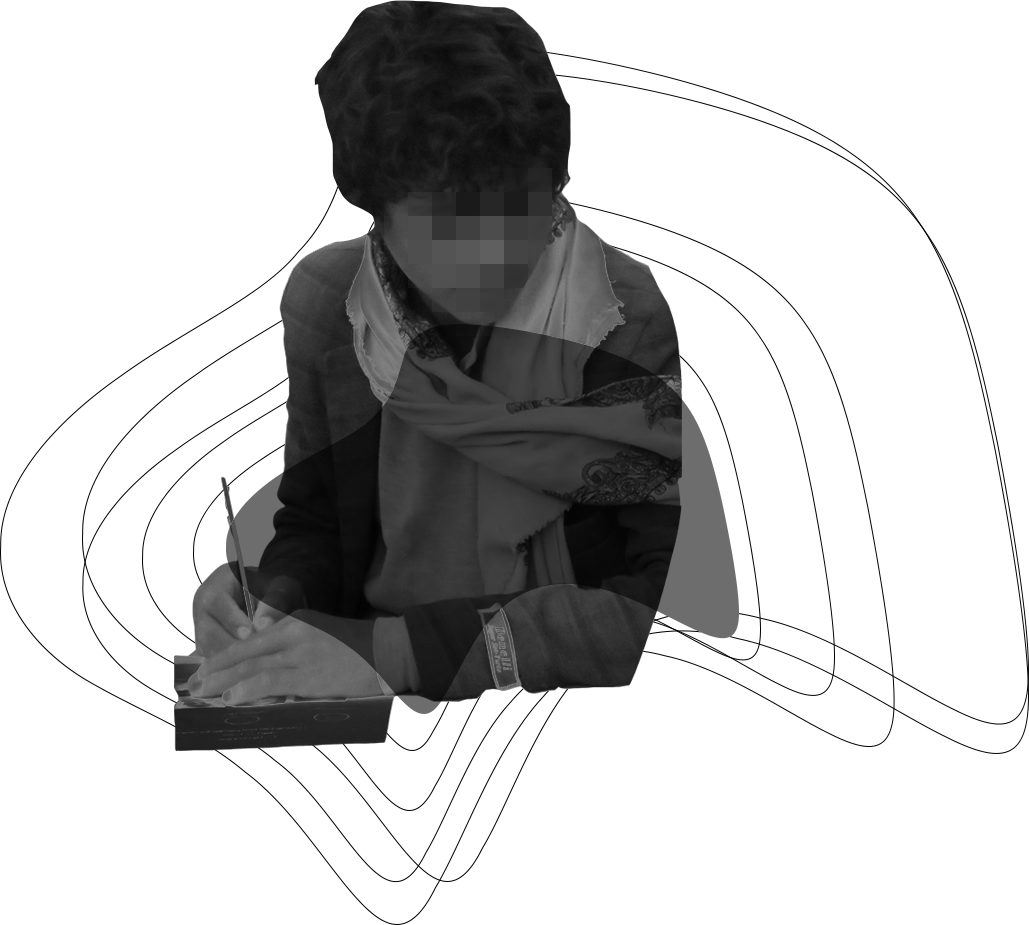Yemen and
Saudi Arabia
Family Bonds

‘‘



‘‘


Yemen, located south of Saudi Arabia at the edge of the Arabian Peninsula, is home to more than 29 million people. Known as the birthplace of all Arabs, the people of the Kingdom and Yemen share ancestral bonds that go back thousands of years.
The people of both neighboring countries are considered as “one”, they speak the same language, follow the same religion, are made up of the same tribal culture and follow an ancient code of ethics. The people of the Arab peninsula share a practice, a bond of ethics known as “Qiyam AlArab” which means, the values and the principles of the Arabs, practiced for thousands of years from the pre-Islamic era.
![]() Beyond land and borders, conflicts and collisions, Saudi and Yemen are and have forever been tied by bonds of blood and brotherhood that shall remain till the end of times.
Beyond land and borders, conflicts and collisions, Saudi and Yemen are and have forever been tied by bonds of blood and brotherhood that shall remain till the end of times.
To this day, the people of both countries are entwined with bloodlines running strong across the borders. And as such will be the case so far as mankind exists. The Arab cousins do not only share family bonds on both sides of the border but are in fact family in principle, the people of Yemen are our neighbors, friends, relatives, colleagues, but most importantly they are our sisters and brothers. For us to become enemies we must become enemies with ourselves.

Following the socio-political unrest that spewed in 2011, Yemen, one of the poorest countries in the Arab world, has witnessed a major political upheaval resulting in a continuous deterioration in humanitarian conditions. It is notable to mention that Yemen had been receiving Central Emergency Response Fund (CERF) funding since 2007. The majority of the population -more than half of it- is in dire need of services and humanitarian assistance, positioning Yemen as one of the largest global humanitarian emergencies.(1)The conflict in Yemen broke out 7 years ago in 2014, weighing heavily on the country’s stability, and future. The conflict continues to take a heavy toll on Yemeni civilians, resulting the UN dubbing Yemen the world’s worst humanitarian crisis with an estimation exceeding 15,000 civilians killed or injured.
Around twenty-two million Yemenis suffer the consequences and the conducts of the internal conflict and remain in need of assistance. Multiple reports from international humanitarian organizations and outlets show that almost eight million Yemenis are at risk of famine, with around one million of the population affected by a cholera outbreak. The humanitarian violations occurring in Yemen heavily affected the civilians, including the children of the state, making them a vulnerable target of the conflict and its continuous grave violence.
The Houthis exploited children during their rebellion against the government of Yemen between 2004 and 2010. Over the course of six years various independent human rights organizations reported on the increasing number of verified child-soldiers recruited in the Yemen conflict.
Today, the Yemeni government estimates that there are 24 thousand children associated with armed groups fighting among the Houthis. Investigations revealed that the Houthi militia used children as bait in the battlefield to pinpoint the source of opposing gunfire. The children were used in hazardous operations against opposing party. Numerous interviews with former child soldiers recruited by the Houthi militia described the same narrative. Child soldiers made up the dispensable part of the radical armed group—they basically were led to their deaths.
Fearing public backlash and political dissent, Abdul-Malik Al-Houthi, issued a decree on January 5, 2018 forbidding printing any photo of deceased child soldiers below the age of 15 in order to hide them from the public eye. Various independent reports showed that the Houthis are conducting a dangerous radicalization campaign and ideological indoctrination that is a threat to peace and the international community. Children are easier to radicalize, and it makes it harder for families to rebel against the armed group out of fear for their children’s safety.
Promises were made to the families that the young recruits would not engage in confrontations but serve in noncombatant roles. In return for their services, the militia promised to pay a sum of a $80 to $100 monthly salary. Such promises never saw the light of day. From March 2015 to April 2019, the UN was able to verify recruitment of 3,321 children in Yemen, 3,264 boys and 57 girls. According to a UN representative these are the numbers they were able to verify, the actual numbers are likely to be much higher. According to the Annual report of the United Nations High Commissioner for Human Rights published 2020, cases investigated indicated that the Houthis had recruited children as young as 7 to serve as fighters.
“The group found that the Houthis had used the education system to indoctrinate students on Houthi ideology, incite violence and recruit children in 34 schools across six governorates (Amran, Dhmar, Raymah, Sa’ada, Sana’a and Ta’izz). The group verified two cases of detention and forced displacement of educators, and received allegations of 54 being threatened, financially and/or administratively sanctioned for refusing to collaborate with Houthi child recruitment efforts,”(2) the report stated. This year’s report finding covered incidents from June 2019 to June 2020. It also included findings dating back to 2014 that were not covered in the two previous reports. The report contained evidence that the Houthi rebels enlisted nearly three dozen teenage girls used as spies, guards, medics and agents to recruit other children.(3) Rebels were also found to be recruiting children from schools, poor urban areas, and detention centres and including them in the ongoing fight.
Some parents encouraged their children to enlist in the armed militia because they considered it as a source of income, and not many officers would turn them away, according to various independent reports.
According to United Nations report of the Secretary-General on children and armed conflict(4) the implementation of “Action Plan and Roadmap” by the government of Yemen progressed in the first half of 2019 with the appointment of 90 child protection focal points within Yemen

“The children are used in the conflict to fight, guard checkpoints, and to provide logistical support to the military," the report stated.
The Six Grave Violations Against Children during Armed Conflict
The security and protection of children is a collective moral and legal responsibility that lies upon the shoulders of the international community, and is a main pillar in achieving international peace and security. As a step closer to protect children in armed conflict, the GA has identified six grave violations to the rights of children, the legal basis for these violations lies in relevant international law, which in turn encompasses international humanitarian law, international human rights law and international criminal law.
1- Recruitment and use of children
2- Killing and maiming of children
3- Sexual violence against children
4- Attacks against schools and hospital
5- Abduction of children
6- Denial of humanitarian access
In accordance with article 39 of the Convention on the Rights of Child, parties shall take all appropriate measures to promote physical and psychological recovery and social integration of a child victim.
The program’s main goal is to reintegrate children formerly associated with armed conflict into society.
The program involves determining the medical needs of the children, providing psychiatric rehabilitation, reintegrating the children into their communities, enrolling the children in schools and following up with them.
The program also involves discovering and enabling the children’s capabilities and talents to prepare them for the outside world.
After the children have completed the residential portion of the program, social workers and other specialists continue to monitor their progress at school and at home, and follow up reports are prepared in order to determine the long-term outcomes of each child’s participation in the program.

Finally, the program aims at educating parents on the dangers of children's involvement in conflicts and creating a healthy family environment.
The program started with the aim of rehabilitating and reintegrating 2000 children through a number of stages, with the purpose of gradually creating a long-lasting impact through providing development training of local partners.
King Salman Humanitarian Aid & Relief Centre (KSrelief) developed the humanitarian endeavor in 2017. Since its launch on September 9th of 2017, 580 children have been rehabilitated and reintegrated by the Reintegration Program for Children Associated with Armed Conflict by the Child Soldiers Rehabilitation Program. Their parents participated in an educational awareness program on the dangers of children’s involvement in conflicts.
Children have
been REHABILITATED AND REINTEGRATED
Funder and developer, KSrelief, has partnered with a local organization for Civil Orientation to manage the operation on the ground. The program has undergone 13 stages of development, that includes the assessment of each stage to identify the effectiveness of each stage and areas of improvement.
The program is built on developing local partnerships to ensure the impact is sustainable and long lasting, as per goal #17 of the UN sustainable development goals which emphasizes partnerships for the goals,and goal #4 which highlights the importance of education in building a healthy community.
Thirteen-year-old Saleh was preparing for school exams the day he was forced to put down his books and pick up a firearm, “It was a Saturday morning, I will never forget the day they came knocking on our door,” said Saleh. How could he forget? it was the day he lost a father and was taken onto the frontlines of the conflict. The thirteen-year-old joined the thousands of other children reported to have been forced or led under false pretenses by the Houthis. The unwelcome guests according to Saleh were a group of 12 armed men seeking to enroll new fighters for the Houthi militia.
Saleh, the eldest of four siblings, lived in a small village located in the province of Marib, with his mom, father, sister and two younger brothers. “We lived a simple life, but we were happy,” he said. Recalling the times before the government forces temporarily lost control of Marib to the Houthis in 2014.

Led by the appointed Houthi Mushref(supervisor) in the area, the armed militants requested that both father and son join them on the frontlines in battle to fight “the sons of the American and Zionist forces invading Yemen.” When Saleh’s father refused their request repeatedly, they shifted their focus to the son, insisting on taking the boy with them by any means necessary.
One of the men took a hold of Saleh and started dragging him towards their military vehicle. The father’s repeated pleas to free his son, were met with deaf ears. Refusing to stand by and watch the intruders take his son forcefully, Saleh’s father attempted to retrieve his rifle from inside the house. He never made it to the front door, Houthi Guerrillas shot and killed him in a hail of gunfire as his entire family watched helplessly. “ All I could do was cry, I didn’t wish life,” he said.

All I could do was cry, I didn’t wish life.
Forced onto the military vehicle carrying the armed Houthi militia, Saleh, was taken to the front-line of Niham, an area located east of Sana’a. And there began his 5-month ordeal serving at Al-Fardah checkpoint.
The 13-year-old boy was given a green religious textbook upon his arrival, and was lectured on the virtues of fighting in ‘a holy war against the enemies of the imam’, The Houthi militia uses religious rhetoric to recruit and encourage children to join them in their so-called holy war. Saleh managed to escape his capturers and make to his house where he found his mother and sister awaiting his return. His two younger siblings were sent to Marib by their mother fearing that they would face the same fate as their brother. Where the family was reunited once again.
In 2016 after the school bells rang in the morning announcing the start of the school day, and students took to their seats in the classrooms, six Houthi armed guerrillas walked in seeking to enroll child-soldiers in the holy war of destruction.
Two brothers, 13-year-old Riyad and his 10-year-old brother Ramzi were taken by the Houthi militia after recruitment bodies personally visited their hometown school preaching religious rhetoric and promising to pay monthly wages for those willing to fight for their cause. “They ordered us to accompany them and to leave our school bags behind, “ he said, “You are going to Jihad against ISIS and the Americans, they told us.” From school the new child recruits were taken to a Houthi training camp located in Sa’dah.

Both brothers underwent rigorous training for one month before being assigned to one of the most dangerous battlegrounds in the recent conflict known by the name of Tabat Al-Qanaseen (Snipers Hill) located in the area of Niham. “We were trained on how to use guns, like the G3 and ZU 23— (Russian anti-aircraft twin barreled auto cannon).”
They handed the new recruits green books on Syaed Al-Imam. “They told us that he is a prophet,” he said.
Most of the boys at the camp were terrified, he said. The boys cried and pleaded with their abductors to return them to their homes. Their abductors refused, “this is Jihad, you have to be men and fight ISIS and the Americans,” he recalled.
They took the young boys to the warfront, “we came under direct attack. The others and I were terrified, but they kept on telling us to be strong,” he said.
Riyad and his cousin were in the same barracks of his friend and schoolmate Abdullah.
They would order the boys to take post in areas where there was heavy confrontation with coalition forces. “My cousin was shot in the leg by a sniper. I started to wrap a piece of cloth on the wound, I was trying to stop the bleeding. I was really scared and I just started crying when my cousin went into a coma.”
“They accused me of being a traitor and threatened to kill me. They said that I had sold them out to the enemy, I had nothing to do with it, he said. Confused on why they would accuse him of such a thing, Riyad said that he kept on telling them the truth that they were attacked and his cousin was injured as a result, “but they insisted that I’m a liar and that I was an agent that provided information to the enemy”.
The commander’s tone of voice sent chills down his spine and Riyad thought that they surely were going to execute him, “when the other fighters arrived, that saved us,” he said.
“We were deployed to different locations. We would replace the adult fighters that would leave their posts upon our arrival, he said. The boys who were no older than 15 were given orders to attack a coalition post. On a daily basis the commander would hand each child-soldier 50 rounds of ammunition and commanded them to seize control of an army post.
When they entered the area, thinking the enemy had escaped, they found themselves surrounded, and shots fired at them from every direction. “We defended our position. We managed to press one side until a clear path was open. We rushed out of the area.”
Riyad, Ramzi and 5 other children were also tasked with planting explosive mines. “We told them that we couldn’t do that but they insisted and taught us how to do it.”
One day upon returning from planting mines in an area assigned by their commander, “One of my friends stepped on a mine and was blown to pieces,” he said. Realizing the danger of the task assigned to them, Riyad said, “We didn’t want to do it anymore, I told them that but they threatened to kill us if we didn’t continue on planting the explosives.”
“One day we pleaded with them to send us back to our mothers and not kill us,” he said, “they told us we should commit a suicide (attack), you have nothing to stay for,” said the commander. “We tried to escape but they’d capture us and send us back. They threatened to kill us if we made any further attempts to escape.”
“I wanted to escape and could have ,but my brother refused fearing that we would be executed,” he added.
Riyad repeatedly tried to convince his younger brother of escape, but Ramzi refused the thought completely fearing execution.
Finally, the elder brother figured out a plan his younger brother agreed to, Riyad convinced the cook, after constant pleas, to smuggle them to ‘Amran. Riyad promised the cook that they would return within two days. “Just a short yet much needed two-day break,” he pleaded, plus he promised to give him 50,000 (YER)—30 cents shy of $200 for his services.
Their plan succeeded, the cook agreed and smuggled the two boys into the city. When they reached the house, it was empty. Their family had already escaped to Marib. They went to their uncles’ house who arranged their escape route to Al-Jawf.
On their way they were stopped at a check point set by coalition forces near the outskirts of Al-Jawf. The impact of the conflict was visible on the two boys. When questioned, Riyad conveyed his story and could call his father. Approximately 48 hours later, the two brothers were released into their father’s custody. It was then and there the young boys and their father were introduced to Reintegration of Children formerly Associated with Armed Conflict.
(1) World Humanitarian Data and Trends 2014, OCHA (Refrence)
(2) Human Rights Council Forty-fifth session14 September–2 October 2020 Agenda item 2, Annual report of the United Nations High Commissioner for Human Rights and reports of the Office of the High Commissioner and theSecretary-General Situation of human rights in Yemen, including violations and abuses since September 2014 (Refrence)
(3) Human Rights Council Forty-fifth session14 September–2 October 2020 Agenda item 2, Annual report of the United Nations High Commissioner for Human Rights and reports of the Office of the High Commissioner and theSecretary-General Situation of human rights in Yemen, including violations and abuses since September (Refrence)
(4) General Assembly Security Council Seventy-fourth session Seventy-fifth year, Agenda item 66 (a), Promotion and protection of the rights of children: promotion and protection of the rights of children, Children and armed conflict. (Refrence 1) (Refrence 2) (Refrence 3)